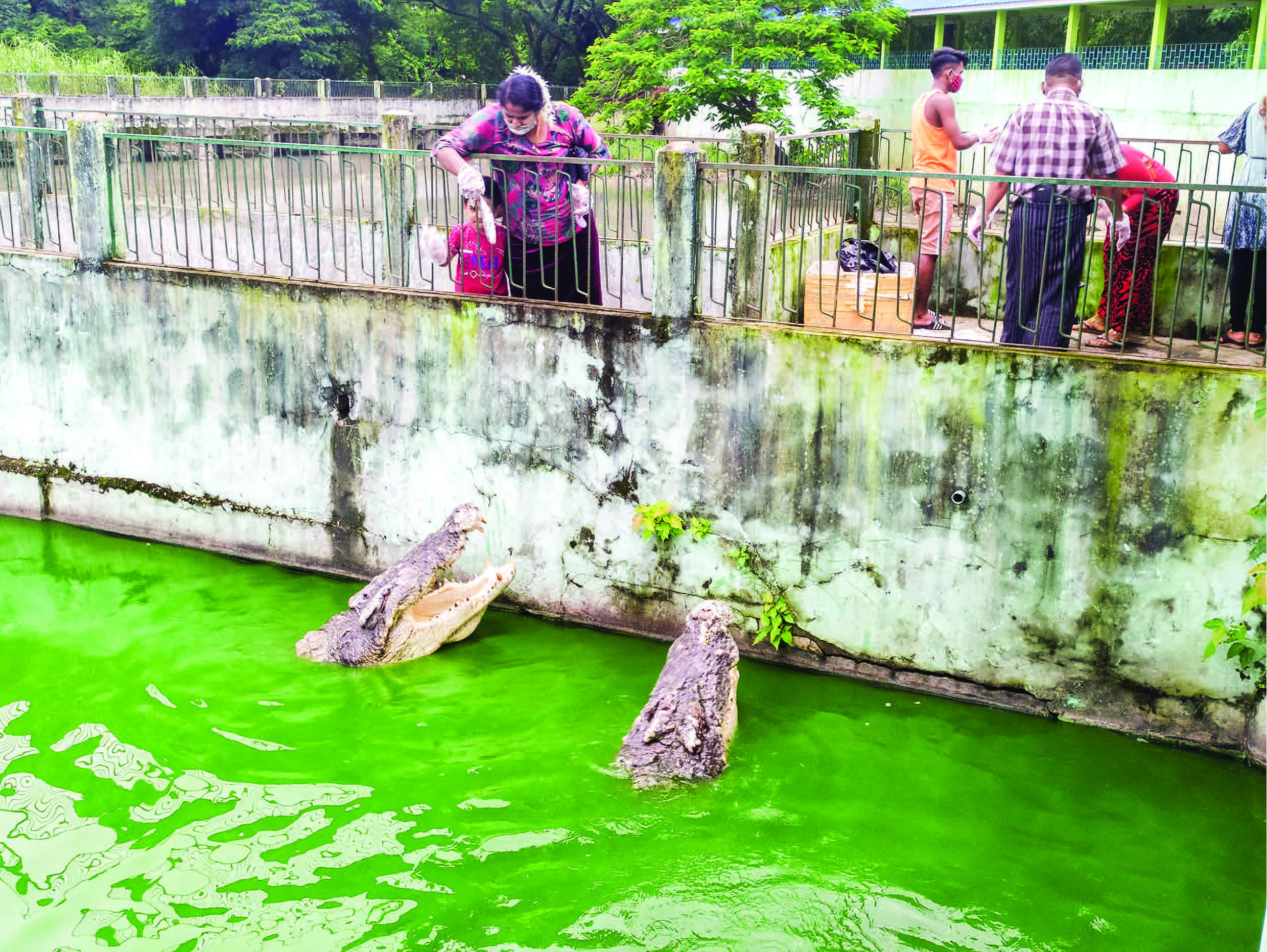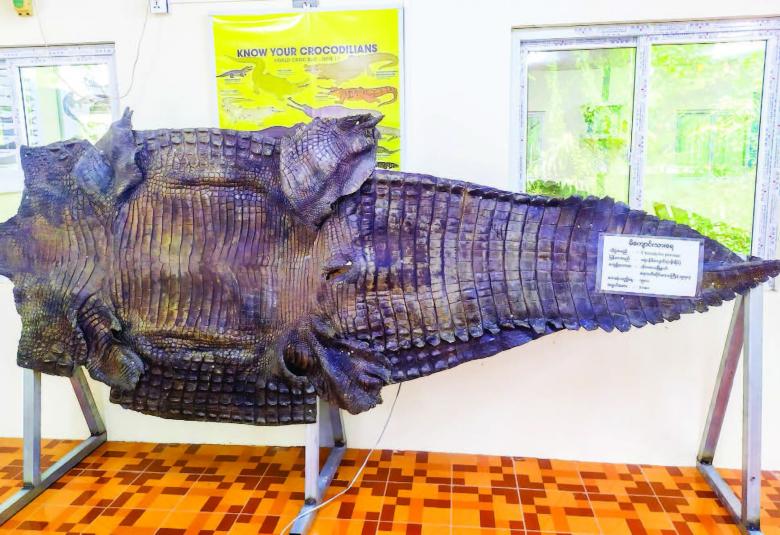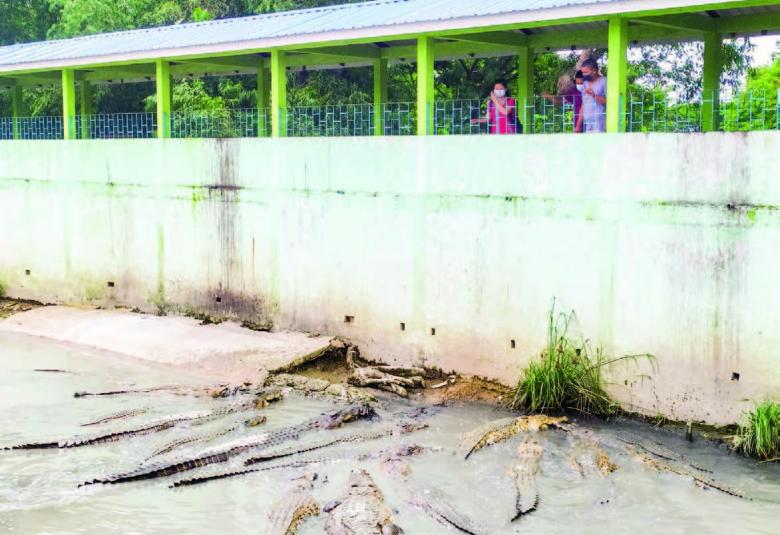By Myint Maung Soe
EVERYBODY in Myanmar is familiar with the crocodile named Nga Moe Yeik via videos, Zat Pwe (traditional theatrical performance) and other entertainment since their childhood. I knew nothing regarding the crocodiles even though I am a graduate in Zoology. I became to know a little about crocodiles when I arrive at Thaketa Crocodile Farm. The Nga Moe Yeik crocodile is very interesting because it is the wildest aquatic animal. They ate fish, prawn, tortoises and sharks and other huge animals, and are sometimes harmful to human beings.
They can be seen at freshwater and saltwater regions near Bogale in Ayeyawady Region. Now, they become an endangered species. The Department of Fisheries under the Ministry of Agriculture, Livestock and Irrigation established a crocodile farm. It is located in Mya Khwar Nyo Street of industrial zone ward in Thaketa near Nga Moe Yeik creek. The farm takes a walk of about 15 minutes from Kyauk Tine bus stop.
The crocodile breeding industry began in 1968-1969 in Myanmar, and Thaketa Crocodile Farm was launched in May 1978 and operated as a recreation centre to the public since 6 November 1997.
Thaketa crocodile farm was established with the aims of ensuring more extended existence of the crocodiles, becoming a site of relaxing and seeking knowledge for local and foreign travellers and ensuring public participation in the wildlife conservation.
There are 547 crocodiles of different ages. It is the figure compiled on 3 August 2020. The farm breed only Crocodylus porosus (Saltwater Crocodile) and they are called Nga Moe Yeik crocodiles or Than Thu Mar crocodiles.
The crocodile species found in Myanmar are Crocodylus porosus, Crocodylus polustris and Graviails gangeticus and Crocodylus siamensis.
They are amphibious carnivores with long bodies and have been in existence since more than 240 million years.
They can be seen in Africa, Australia, America, Bangladesh, Brunei, Myanmar, Cambodia, China, India, Indonesia, Malaysia, Papua New Guinea, the Philippines, Singapore, Sri Lanka, Solomon Islands, Thailand and Viet Nam and sometimes in Japan. There are about 27 species of crocodiles but only 23 species are found -14 kinds of crocodile species, 8 of alligator species and 2 of gavial species.
The SaltWater Crocodile, Nga Moe Yeik can live for 70 to 100 years and the size of male crocodile is bigger than female. Male crocodile is 13 ft in average length and the female is about 10 ft in length. They become adults when they reach about 8 ft. Nga Moe Yeik crocodiles are kinds of alligator species and the length of head is one-seventh of their total length. They mate in February and lay eggs in April. A female crocodile lays 20 to 70 eggs which incubate after 90 days. A baby crocodile is about 8 inches in length, and becomes one-foot-long crocodile after a year.
At the temperature of 30.6 degree centigrade, eggs usually hatch into males, and when the temperature is lower or higher, eggs usually hatch into females.
Saltwater Crocodiles are the most expensive animals in the world and their skins are used in producing clothes and bags. The World Wildlife Fund (WWF) bans the sale of crocodiles.
The Nga Moe Yeik crocodiles are the most dangerous animals for the human beings and the crocodile attack occurred in Bogale township.
Those who want to see the Nga Moe Yeik crocodiles should go to the Thaketa Crocodiles Farm individually or together with the family members and can feed the crocodiles.
The entrance fees range from K500 for locals and K1,000 for foreigners. The children under five are free of charge. There are places to park cars, motorcycles and bicycles.
In conclusion, Myanmar boasts for its ability to conserve the endangered crocodiles to date. Although dinosaurs and Homo Sapiens emerged at the same time, dinosaurs gradually disappeared due to the lack of conservation. So, all people should participate in conservation of Nga Moe Yeik crocodiles.
(Translated by Khine Thazin Han)





